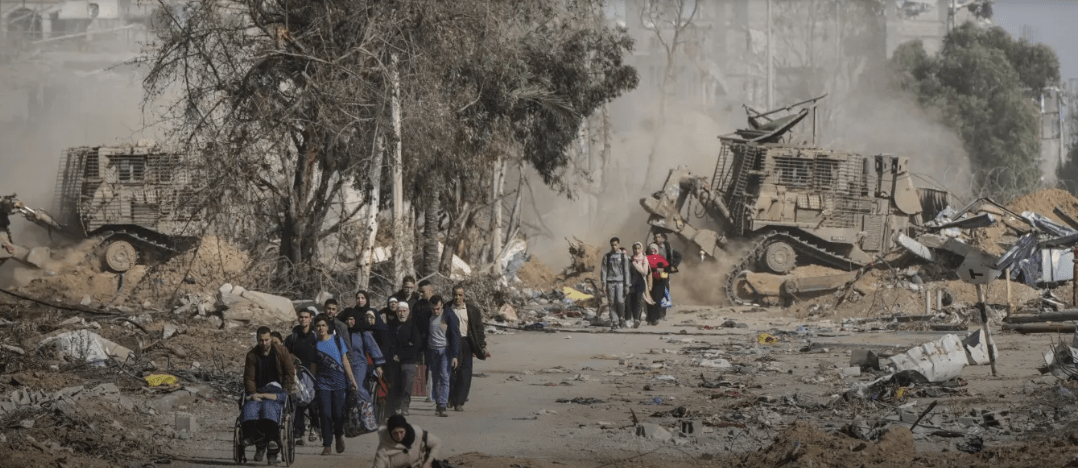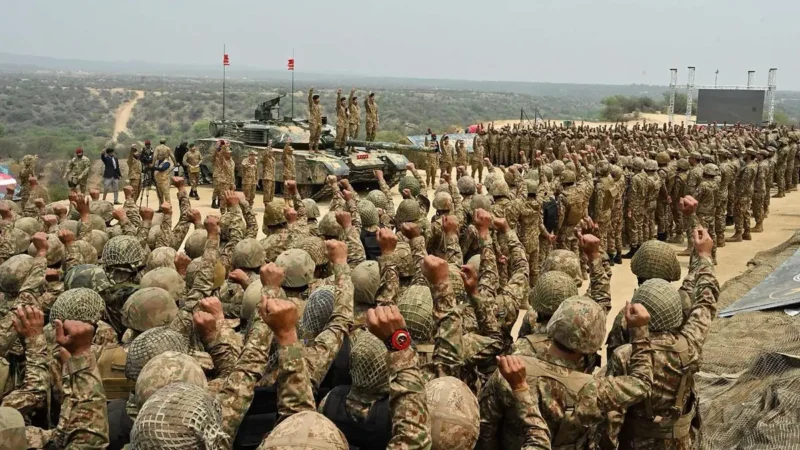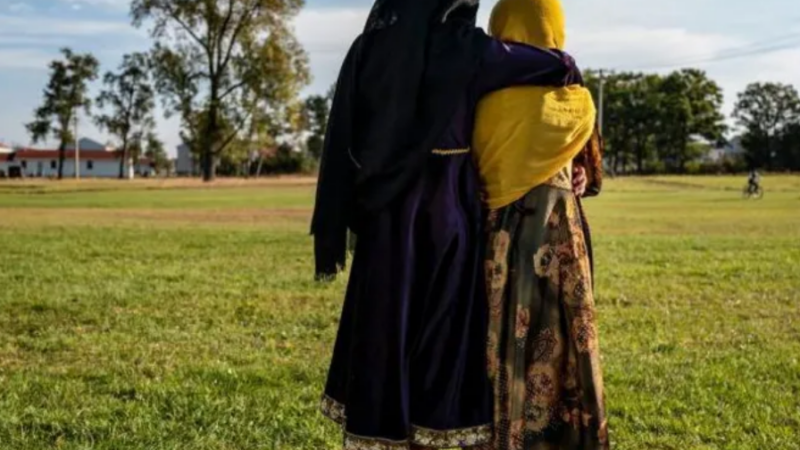“Besieged, starving, and without hope”

The first thing I thought of was the Nakba [“The Catastrophe”] of 1948, I thought [the Israeli authorities] were trying to do this again, to take over our land and our houses again. Once I heard the evacuation order to go south, my first reaction was: I’m not leaving. It is not an option to leave everything I have worked for…but then the bombs started and our houses were being destroyed, I needed to protect my family. This is why I finally left.
Dr. Hassan fled from his home in Jabalia refugee camp in northern Gaza on October 11, 2023, and fled south where he and 36 other members of his family sought refuge in Khan Younis after the Israeli military instructed people to go there for their safety. He described Israeli bombardments while fleeing along the main artery to the south, the Salah al-Din Road, and Israeli airstrikes when he got to Khan Younis where all the shelters were full, and his family had to separate to find somewhere to sleep. After multiple rounds of displacement Dr. Hassan and his family remain displaced in southern Gaza.
On October 7, 2023, Palestinian armed groups in Gaza carried out devastating attacks on southern Israel, committing numerous war crimes and crimes against humanity against civilians. Israel responded with a military offensive against Palestinian armed groups in Gaza. This offensive, which includes a massive bombing campaign and ground attacks across Israeli-occupied Gaza, continues to this day. There have been ongoing attacks on military targets, but there have also been significant amounts of unlawful airstrikes and destruction of civilian infrastructure and housing, a tight blockade of Gaza that has led to a humanitarian catastrophe and amounts to collective punishment of the civilian population, and the use of starvation as a weapon of war. Since the first days of the offensive, Israel has carried out these acts in conjunction with an evacuation system that has flagrantly failed to keep Palestinians in Gaza safe, and in fact put them in harm’s way. Nowhere in Gaza is safe. As this report will show, Israel’s actions have intentionally caused the mass and forced displacement of the majority of the civilian population of Gaza.
According to the United Nations, 1.9 million people were displaced in Gaza as of October 2024 out of a population of 2.2 million people. This report examines the Israeli authorities’ conduct which has led to this extraordinarily high level of displacement and finds these actions amount to forced displacement. Given the evidence strongly indicates that multiple acts of forced displacement were carried out with intent, it amounts to war crimes. The report further finds that the Israeli government’s acts of forced displacement are widespread and systematic. Statements by senior officials with command responsibility show that forced displacement is intentional and forms part of Israeli state policy and therefore amount to a crime against humanity. Israel’s actions appear to also meet the definition of ethnic cleansing.
Israel is the occupying power in Gaza and as such its conduct is governed by international humanitarian law (IHL). Under IHL – or the laws of war – forcible transfer, which means the forced displacement of any civilian inside an occupied territory, is prohibited, and, if committed with criminal intent, is a war crime. The only exception to this fundamental prohibition is when an occupying power evacuates people for their security or for an imperative military reason. For each displacement of a civilian to be lawful, Israel’s actions must also meet the following conditions: i) ensure that safeguards are in place so that the civilian who is forced from their home is moved safely, is not separated from family, and has access to food and water, health care, sanitation, and reception centers or shelter, ii) ensure the evacuation is temporary; and iii) facilitate the displaced person’s return to their home as soon as possible after the end of the hostilities in the area from where the person was displaced.
Israel claims that the displacement of nearly all of Gaza’s population has been justified for the security of the population and for imperative military reasons, and it has taken the requisite steps to safeguard civilians. Because Palestinian armed groups are fighting from among the civilian population, Israeli officials claim, the military has evacuated civilians to enable it to target fighters and destroy the groups’ infrastructure, such as tunnels, while limiting harm to civilians, such that the mass displacements were lawful. This report, based on interviews with 39 Palestinians who are internally displaced in Gaza, most multiple times, an intricate analysis of Israel’s evacuation system, the widespread destruction evidenced on satellite imagery, the analysis of videos and photographs of attacks on designated safe zones and roads and the humanitarian situation of the population, finds that Israel’s claims of lawful displacement are largely false. Human Rights Watch has amassed evidence that Israeli officials are instead committing the war crime of forcible transfer, a grave breach of the Geneva Conventions and a crime under the Rome Statute of the International Criminal Court (ICC).
Demonstrably, Israel has not evacuated Palestinian civilians in Gaza for their security, as they have not been secure during evacuations or on arrival at designated safe zones. Nor has Israel convincingly claimed that it had a military imperative for forcing most Palestinian civilians from their homes. Even if Israel was able to demonstrate such an imperative, its failure to ensure the security and the guarantee of protections of displaced persons as they fled and in the places to which they were displaced would still render the displacement unlawful. The evacuation system failed to keep people safe and instead often served only to spread fear and anxiety. Evacuation orders were inconsistent, inaccurate, and frequently not communicated to civilians with enough time to allow evacuations or at all. The evacuation orders also failed to take into account the needs of people with disabilities, many of whom are unable to leave without assistance. Designated evacuation routes and safe zones were repeatedly attacked by the Israeli military. Rather than meet its obligations to put in place basic safeguards to ensure access to food, water, sanitation, and health care, Israel has taken steps to cut them off or severely restrict humanitarian aid. Further, Israel is under an obligation to actively facilitate the return of displaced persons to their homes in areas where hostilities have ceased, but it has instead rendered large parts of Gaza uninhabitable. The Israeli military has carried out demolitions, intentionally destroying or severely damaging civilian infrastructure, including schools, and religious and cultural institutions, including after hostilities had largely ceased in an area and its forces controlled the area. The Israeli military is also establishing what appear to be permanent buffer zones – securitized and emptied areas of land between the Israeli and Gaza border where Palestinians will likely not be allowed to enter.
Military Imperative and the Security Exception
The burden is on Israel, as the occupying power of Gaza, to prove that overriding military reasons have made its repeated instructions to evacuate – which have displaced nearly all of Gaza’s population – imperative, or the evacuations were necessary for the security of the population itself. The term “imperative” sets a very high threshold – higher than an ordinary assessment of military necessity. Displacement can only be justified if it is a measure of last resort for military operations where there are no feasible alternatives. It does not suffice for civilians to be at risk from an active or reasonably expected threat from an act (the Israeli bombardment) that would deprive Palestinian armed groups of, or secure for Israel, as the occupier, a military advantage. For there to be a military imperative, the operation threatened must be one whose frustration would threaten the entire military objective in the conflict.
Israel cannot simply rely on the presence of members of Palestinian armed groups, materiel, and installations in Gaza to justify the displacement of civilians. Israel would have to demonstrate that displacement of the civilians was, in each instance, its only option.
Evacuating a protected population for their security refers to the temporary removal or relocation of civilians from an area of danger or imminent harm to a safer location. This can be done to protect the population from military operations, ongoing hostilities, or other risks to their safety. While it could be argued that Israel at times moved Palestinians in Gaza to areas that were safer than areas from which they were ordered to leave, this report demonstrates that evacuation routes and so-called safe zones were consistently and repeatedly bombed, undermining the Israeli military’s position that people were being moved “for their safety.”
Israel cannot rely on the security and safety of civilians as a justification for evacuating people if there are no safe areas to which civilians can move. Ultimately, as this report will show, even if Israel can demonstrate that its actions fall within the displacement exception, its lack of adherence to the strict protections required to make an evacuation lawful demonstrates that its orders for people to move were a pretext for forced displacement.
Evacuation System
While there are not detailed criteria for what constitutes an IHL compliant evacuation system, article 49 of the Geneva Convention states that civilians should be, among other conditions, moved in “safety.” In other words, the fundamental goal is to protect civilians from the dangers of conflict. Instead of protecting Palestinians in Gaza, Israel’s evacuation system put people in harm’s way.
The Israeli military began pounding Gaza with airstrikes on October 7, 2023. Days later, overnight into October 13, 2023, the Israeli military ordered more than a million people in northern Gaza to evacuate within 24 hours. This first broad and urgent mass evacuation order was followed up with more orders and directives to Palestinian civilians throughout the north of Gaza to leave their homes and move south. Israel put in place an evacuation system that gave instructions which were unclear, inaccurate, and contradictory, making it extremely difficult for civilians to know where or when to move. Others contained missing or contradictory information about where to go, when, and which destinations were safe, and were corrected only hours later, if at all. For example, on July 1, the Israeli military issued an evacuation order for neighborhoods in eastern Khan Younis and Rafah, including al-Fukhari where the European Hospital, one of the largest hospitals in southern Gaza, is located. The next morning, the Israeli military and the Coordination of Government Activities in the Territories (COGAT) issued a clarification in English on their X accounts stating that the hospital was not subject to evacuation. The COGAT Arabic Facebook page also updated the evacuation order post to include the clarification. However, this clarification was not shared by any of the Israeli military’s Arabic spokesperson’s social media accounts. By the time the clarifications were issued, staff and patients had reportedly already started to flee the hospital. Many orders were issued online during time periods coinciding with total telecommunications network blackouts in Gaza. Dozens of orders were issued after the time period specified for safe evacuations had already begun, while others were issued after attacks had already started.
Where evacuation orders did suggest a destination or direction of movement, the orders gave far too little time for people to move through what was already an active conflict zone. Overall, Israel’s evacuation system flagrantly failed to ensure civilians could travel safely or reach safety and would be secure after arriving to their place of displacement, and often served only to create widespread fear and confusion, misery, and anxiety. A recent report from the Independent International Inquiry on the Occupied Palestinian Territory, including East Jerusalem and Israel, found that the Israeli military did not offer assistance to those who were unable to evacuate due to disability, age, illness, or other status.






